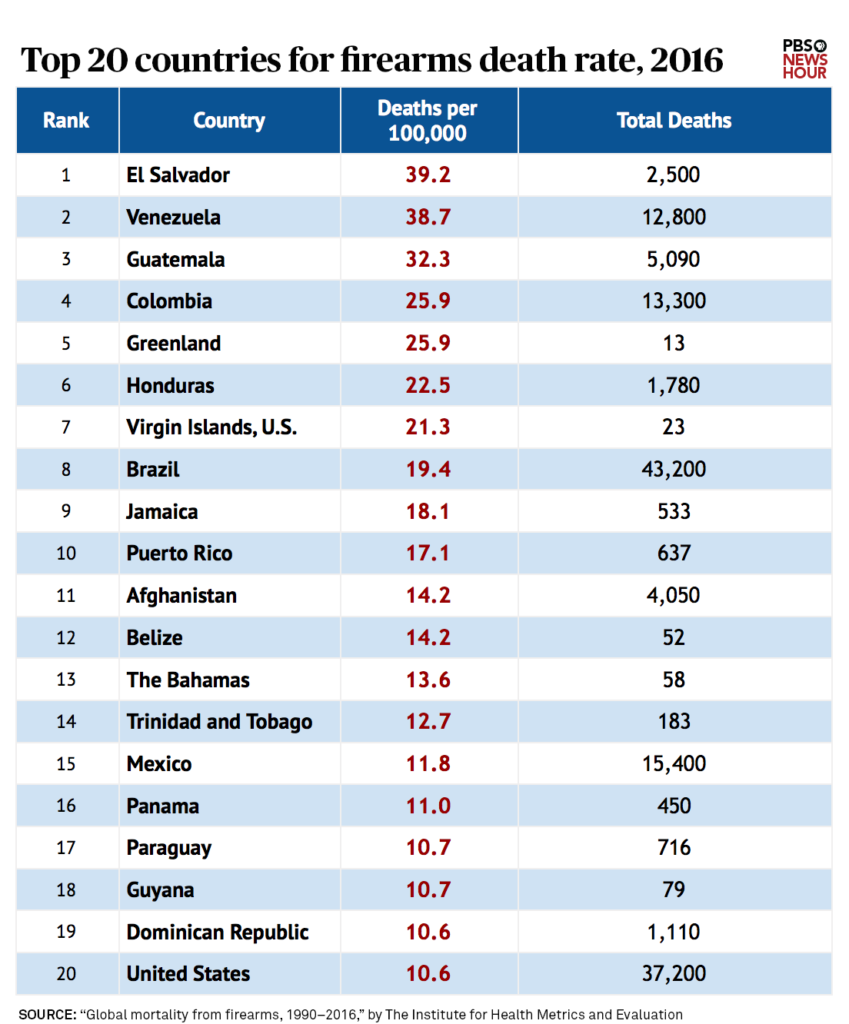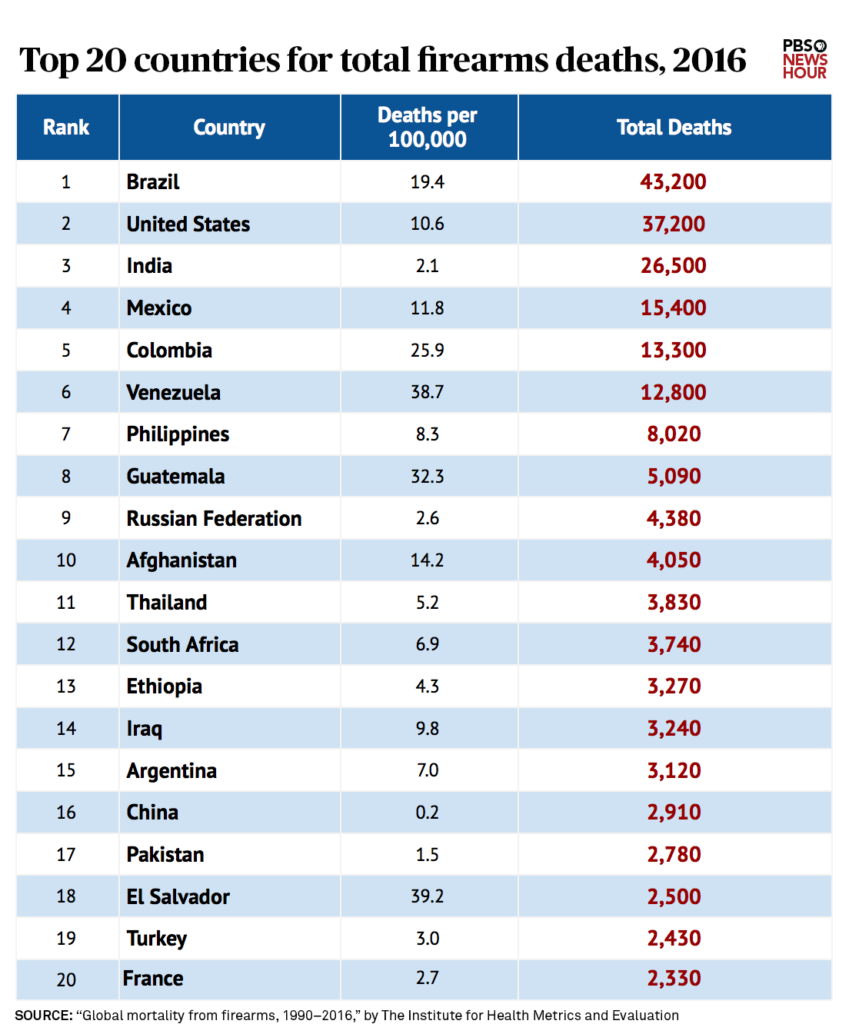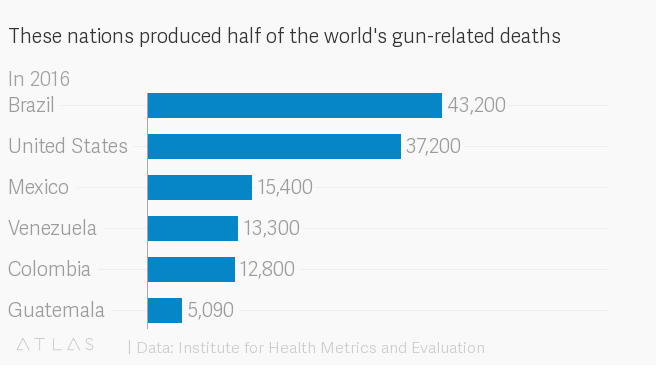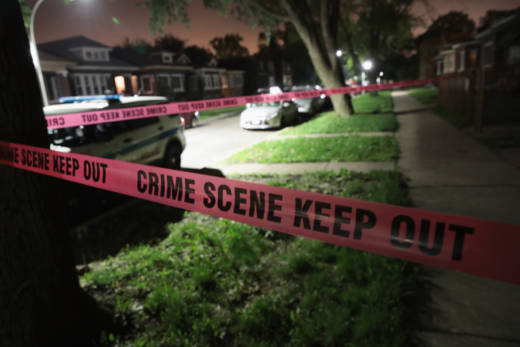But country to country, looking at the ways people die due to gunfire produces a deeply varied picture, said Christopher Murray, the institute’s director.
When it comes to the number of gun-related homicides, the U.S. ranks 30th worldwide. But suicides linked to guns occurred in the U.S. at a rate of 6.4 per 100,000 deaths — a total of 23,800 people — the second highest rate worldwide.
These numbers come days after a gunman in Jacksonville, Florida, fatally shot two people and injured 11 more before he killed himself Sunday during a video game tournament in a shopping mall.
While mass shootings like these capture the most media attention, they are responsible for a small sliver of overall gun deaths in the United States, gun violence experts Frederick P. Rivara, David M. Studdert and Garen J. Wintemute wrote in an editorial published in JAMA alongside the new report.
“In the United States and elsewhere, acts of terrorism committed with firearms and other lethal means have changed the way people live, work, travel, and play,” they wrote. “In the United States, armed guards patrol some schools, and some politicians have advocated allowing teachers to carry guns. Although mass shootings and terrorist attacks are the most visible form of gun violence, they account for only a small fraction of the public health burden of firearm-related morbidity and mortality.”

For this latest report, researchers pulled data about 195 nations and territories, using nearly 2,900 different sources — a median of nine different datasets per nation. The study looks at data from 1990 to 2016, and was largely based on death certificate reports, Murray said.
In the United States, 37,200 people died as a result of overall gun use in 2016, the second highest number worldwide. But when it comes to gun deaths per capita, the U.S. ranks 20th, at a rate of 10.6 per 100,000 deaths — putting it on par with the Dominican Republic. Many places with high gun death rates had fewer deaths than the U.S. because of smaller populations. For instance, El Salvador produced the highest combined gun death rate of 39.2 per 100,000 deaths, but recorded 2,500 deaths overall. When it comes to gun-related suicides, Greenland has a higher rate than the U.S. — 22 per 100,000 deaths — but 11 deaths overall.
Since 1990, the number of gun deaths has declined, the report said. But nearly every year since then, firearm deaths outside conflict zones outnumbered deaths that occurred as a result of war.
“We spend a lot of time thinking about conflict, and probably, we should be spending as much or more time thinking about how to reduce firearm-related homicide and suicide,” Murray said.
These latest numbers “provide the best data” on global gun deaths, said David Hemenway, who developed and directs the National Violent Death Reporting System at Harvard University. Overall, the report underscores that guns “are a major public health problem, not just in the U.S. but throughout the world.”
“Without good data, you just don’t have the knowledge you need to make wise decisions,” said Hemenway, who was not involved in the study. More good data like this is crucial if policymakers want to bring death numbers down, he added.

In 1996, Congress passed the Dickey Amendment, which had a chilling effect on Centers for Disease Control and Prevention-led research into gun violence. Soon, the CDC withdrew questions from federal surveys about household gun ownership. Hemenway said losing these questions robbed two decades worth of researchers of the ability to gauge how easily Americans could access guns.
This year, Congress approved funding to allow the CDC to collect data on violent deaths from all 50 states, a huge improvement over the fraction of states that had previously made data available, Hemenway said. This would give researchers and policymakers a clearer picture about how many Americans die nationwide as a result of guns.
Legally procured guns play a role in most deaths by suicide in the U.S., Murray said, which means this kind of information will be even more critical as nation’s suicide rate continues to rise.
If you are having thoughts of suicide, go to SpeakingOfSuicide.com/resources or call the National Suicide Prevention Lifeline at 1-800-273-8255 (TALK).



